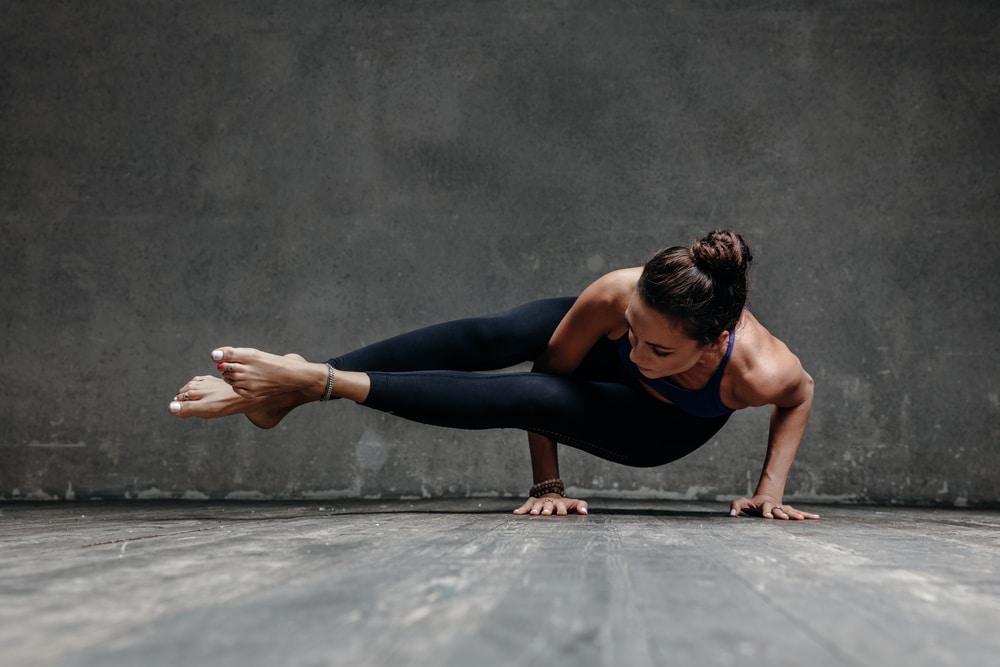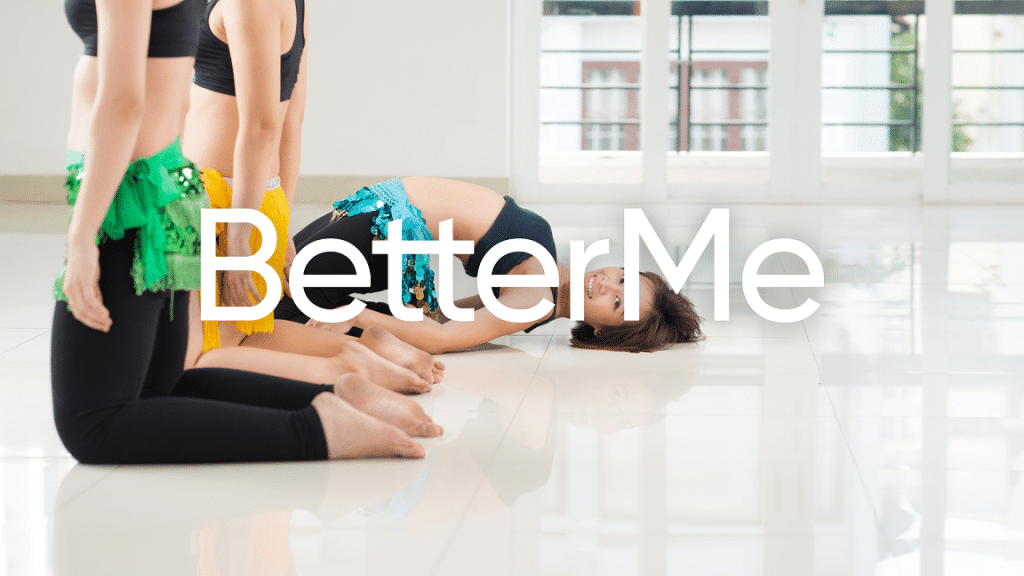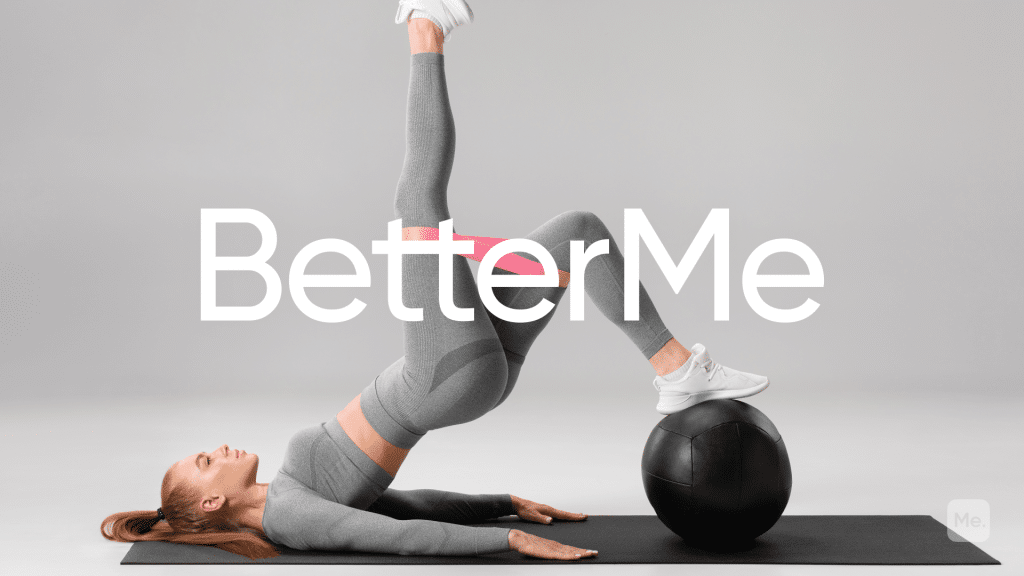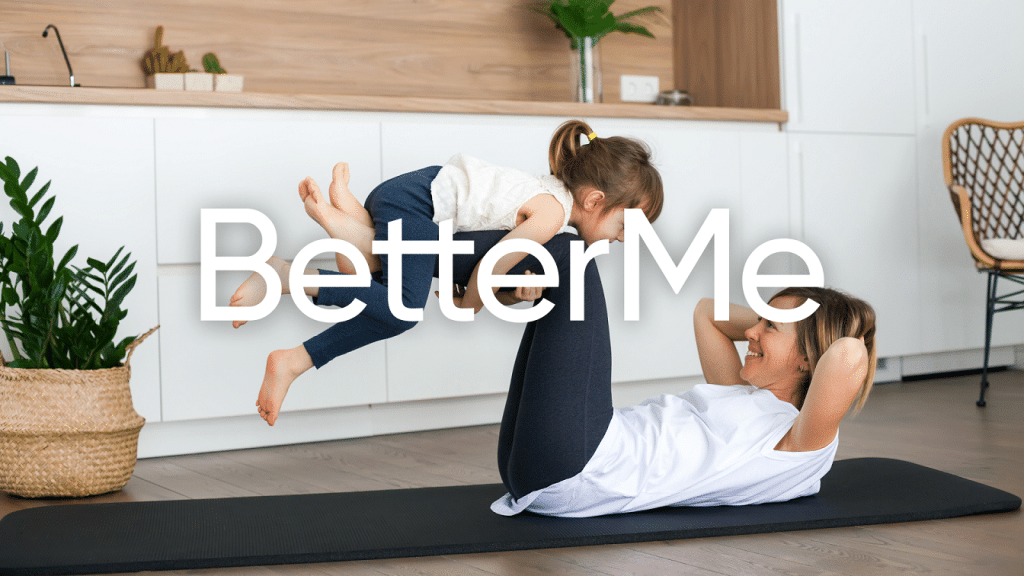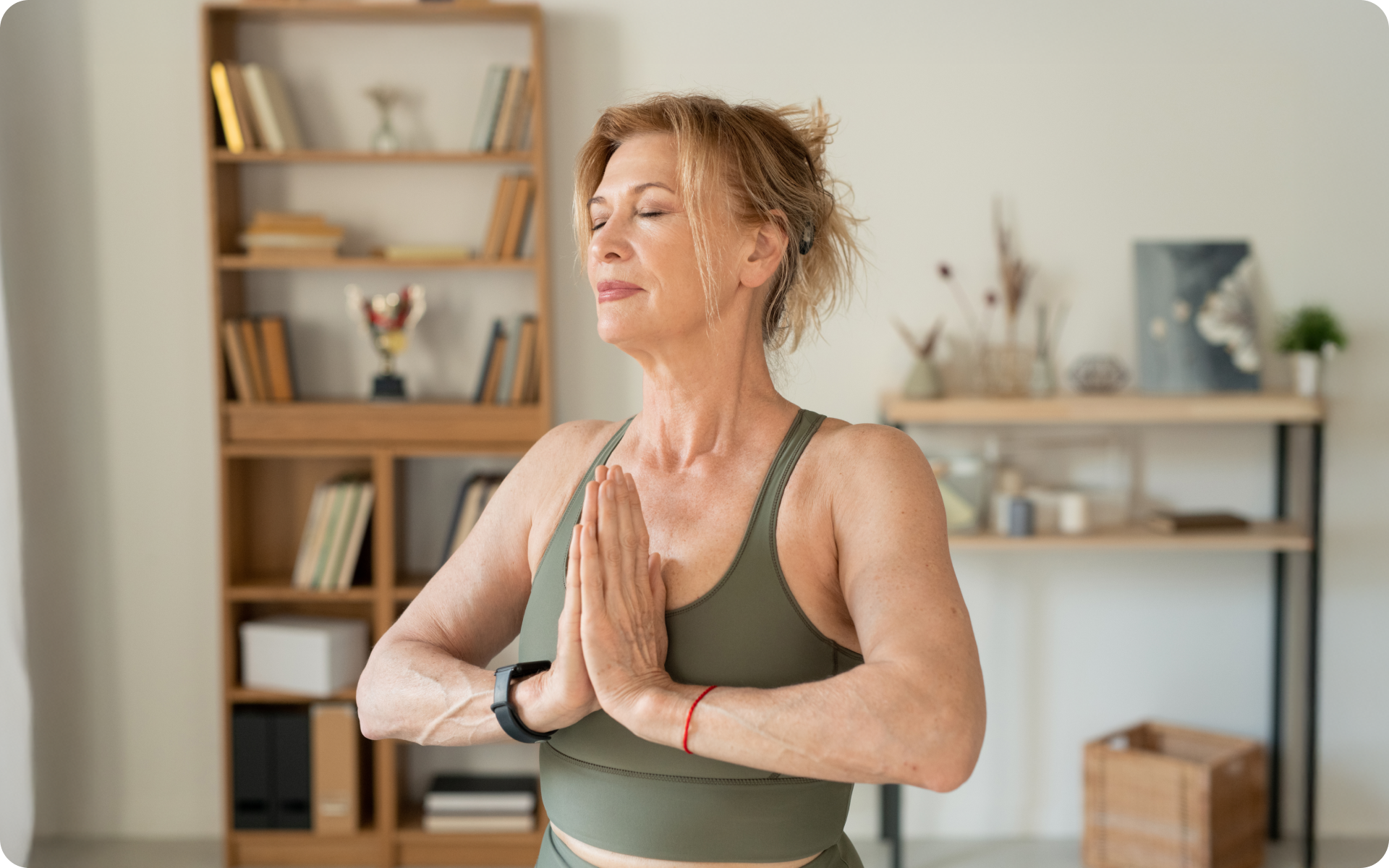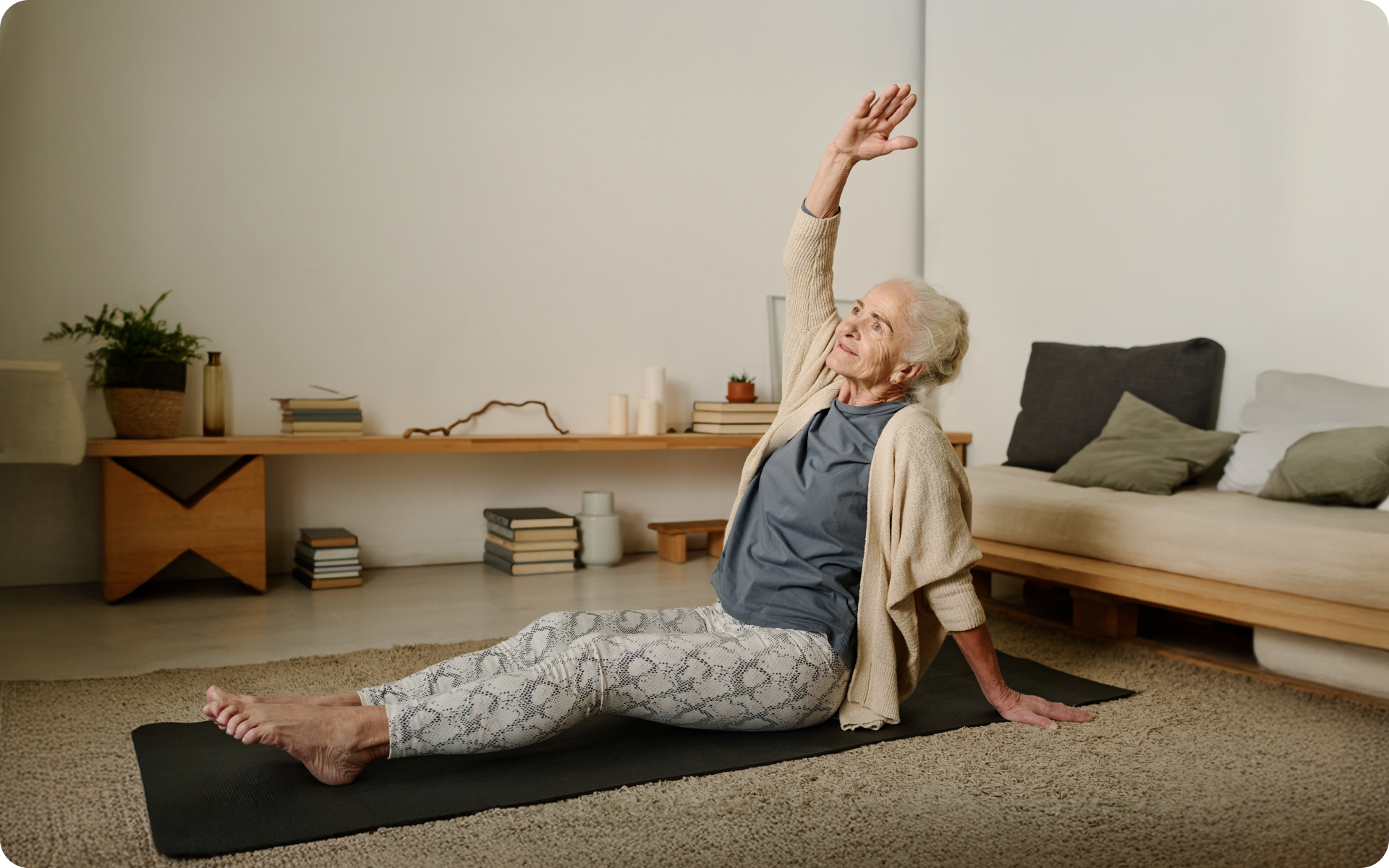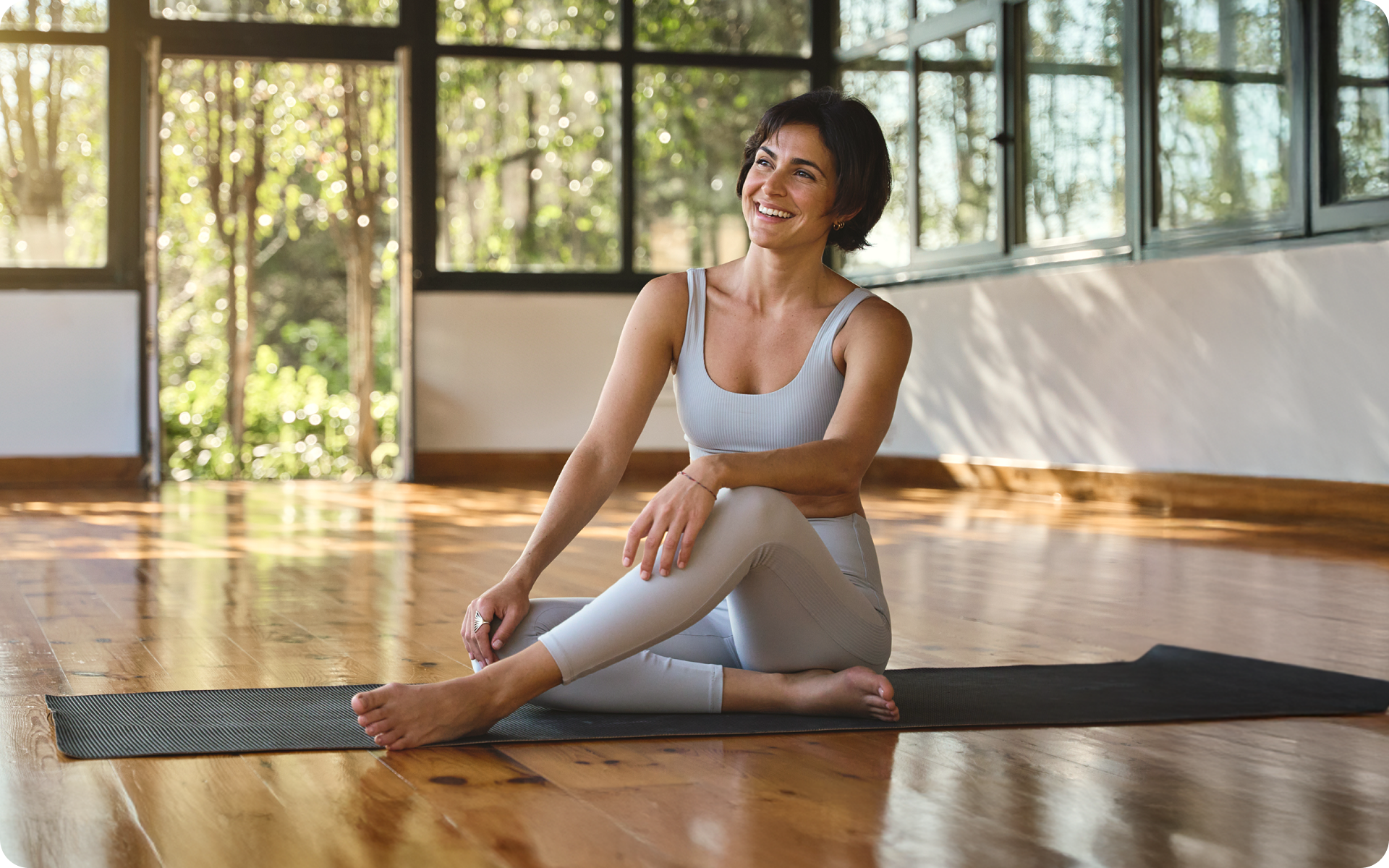Is yoga useful for runners? Most athletes ask this question, especially among those who question its effectiveness. Some believe yoga for runners increases mobility, while others argue it makes running more difficult. So who is right? According to most scientific sources, yoga benefits runners as it improves mobility and is a perfect recovery activity. What follows are perfect yoga poses for runners to improve their flexibility and mobility and relieve tension and soreness during recovery.
Get your personalized
meal plan!
Is Yoga Useful For Runners?
Absolutely! A 2016 study showed that regular yoga could increase male college athletes’ flexibility, balance, and whole-body measures (3). The study concluded that yoga practice might enhance athletic performances that require these yoga characteristics (3).
The findings concur with a 2020 study that shows yoga to be highly beneficial for runners. The study showed that although rigorous static stretching does not benefit running performance, it reduced the rate of acute muscle injuries by 54% (5). The study concluded that static stretching using yoga stretches and only for short durations, combined with additional warm-up exercises, has positive effects (5).
What Yoga Poses Are Good For Runners?
Whether you want to unwind after running or stretching before your run, the bottom line is that yoga benefits athletes. The best yoga poses for athletes vary depending on the aim of the runner. So, there are yoga poses and stretches to perform when warming up, during recovery, and cooling down.
But ideally, the yoga sequences for runners cover power and vinyasa yoga. Here are some of the best yoga poses for runners:
The Best Yoga Poses For Runners’ Hips, Knees, Hamstrings, And Quads
Runners often experience knee pain and tight hamstrings, quads, and hips. They are often advised to perform yoga poses that can fight tightness, strengthen, and lengthen the hamstrings, quads, calves, and hips. Here are a few considerations:
The Standing Quad Stretch
Quadriceps (quads) refer to the muscles at the front of your thigh (4). Strengthening these muscles is important for runners because they help them develop their running stride. But unfortunately, runners often get tight quads, which is not good for them as it can lead to injuries.
For example, when runners experience tight and tense muscles, they can report a misalignment in their hips and back, resulting in intense pain (4). Similarly, strong quads are important among runners because they support the knee and keep knee pain at bay. To perform it (4):
- Stand upright with your feet at hip-width distance and neck and spine in a neutral position.
- Bend your right knee, then bring the right foot up behind your body and towards your bum. Note that you can hold onto a wall or a sturdy object for extra support.
- Grab the right foot using the right hand to mark the standing stance.
- Keep your right knee pointed to the floor, hips slightly pushed, and thighs and knees together.
- Hold this stretch for 30-60 seconds.
- Switch legs.
Read More: Heart Opening Yoga Poses: 10 Moves To Invite More Love And Energy Into Your Life
The Seated Hamstring Stretch
Hamstrings are the muscles that run up the back of your thighs. They help us generate force as we walk or run while stabilizing our bodies. Strong hamstrings are a must to help runners improve their running stride (4).
But sometimes the hamstrings become tight, causing knee and lower back pain. As a result it makes mobility painful and uncomfortable. To correct this, runners are advised to do the seated hamstring stretch to increase flexibility in these muscles. To perform a seated hamstring stretch (4):
- Sit on the floor and stretch your right leg straight while keeping the left one bent and its knee on the floor. Similarly, keep the left foot on the inside of the right thigh.
- Slowly bend forward at your waist. Remember to keep your back straight.
- Stretch your arm to hold your right foot or ankle, depending on your flexibility. Alternatively, you can also hold onto your lower leg. You will feel a stretch in your back leg regardless of where you hold onto. Please stop this exercise if you feel pain or extreme discomfort.
- Hold the stretch for half a minute.
- Slowly return to the sitting stance, then repeat on the other leg.
The Child’s Pose
The stretch is highly recommended for runners because it stretches their back muscles and releases back and neck strain. As a result it helps blood flow to the brain and spine. Similarly, the pose helps runners keep their ankles flexible while stretching the feet and shin tops to avoid shin (4).
How to do it (4):
- Start by kneeling on a mat with your toes pointed behind the body while your bum rests on the back of your feet.
- Bend forward at your waist, then slowly lower the chest towards your knees.
- Stretch your arms over your head and then place your hands flat on your mat. Make sure your hands are straight without a lock on your elbows.
- Try to gently reach forward and pause to hold this stretch for 30 seconds.
- Slowly bring your arms back in and sit up.
- That marks one rep. You can perform 2 to 3 reps or as instructed.
The Kneeling Hip Flexor Stretch
Hip flexors refer to the muscles in the region where your thighs meet the torso. They are important because they help with functions such as stability, mobility, and maintaining the strength of other muscles.
These muscles are particularly important for runners because they help strengthen the lower body and promote stretching to avoid injuries. Tight hip flexors are dangerous for runners as they can cause injuries and hip and lower back pain (4).
You can fight tight hip flexors by performing the kneeling hip flexor stretch. To perform it (4):
- Start standing, then slide your right foot behind your body to help you kneel on your right knee.
- Position both hands on your left knee, then gently and slowly lean your body forward.
- Next, straighten your right hip to stretch your right side hip flexors.
- Hold the stretch for 30 seconds.
- Slowly pull your right foot in to help you return to the standing stance.
- Switch legs and perform the same move.
BetterMe app is a foolproof way to go from zero to a weight loss hero in a safe and sustainable way! What are you waiting for? Start transforming your body now!
Toe Touches
The other excellent stretch for your hamstrings is the toe touch. As the name implies, you must touch your toes from a standing stance to increase flexibility in this area. But there are a few tricks to it, as disclosed in this step-by-step guide on how to do a toe touch (4):
- Stand upright with your back straight, hands by your sides, and feet stacked together or at shoulder-width distance. Remember to keep your knees straight without interlocking them.
- Slowly bend at your hips, then lower your head toward your knees while keeping your back straight.
- Stretch your fingers to help you reach your toes. As you do this, relax your neck and breathe normally.
- Hold the stretch up to half a minute, depending on how you feel.
- Slowly return to the standing stance and repeat.
Low Lunge
Lunges are excellent additions to a workout plan due to their long list of benefits. For example, they target many muscle groups and help in all-body toning for a complete transformation. For runners the exercise is an excellent movement to include in the warm-up routine as it prepares the glutes, core, and quads. To perform it:
- Start in a Downward Facing Dog position. Lie on the floor with your hands at a shoulder-width distance to get in this position. Press your hands down, lift your knees off the floor, and straighten your legs as much as possible. This marks the starting position of this pose.
- Breathe out and step your right foot forward in between your hands. Slowly lower the left knee toward the floor as you slide the foot back. Slide as much as you can or until you feel a nice deep stretch in your left hip and thigh. Be sure to keep your hips low and at the same level.
- Tighten your abdominal muscles, breathe in and lift your chest away from the thigh.
- Gaze straight ahead, lower your hands, and then step back to Downward Facing Dog.
- Repeat on the other leg.
Yoga Poses For Runners’ Recovery
For runners, yoga is a post-workout cool-down activity with physical and mental benefits. It has been linked to reduced injury risk and increased flexibility and mindfulness. Below are some poses to try during recovery:
The Plank Pose
Doing a plank pose after running reduces the straining of your muscles by helping them warm up. Maintain the correct form, even if it means holding the plank for a shorter duration.Here is how you do a plank (2):
- Lie on your stomach with your forearms on the floor. Stretch your legs behind and keep your feet together.
- Slowly lift your upper body off the floor and rest your body weight on your forearms. Next, press through your toes to lift your legs.
- Make sure your body is straight from your head to your feet. Additionally, make sure you gaze down throughout the movement and do not sag your hips.
- Tighten your core muscles and hold in this position for 30-60 seconds. But drop to the ground if you start sagging your hips at any point, as this portrays fatigue.
- Lower your body back to the floor.
Read More: Lying Down Yoga Poses For When You Need To Unwind
Cobra Pose
The Cobra Pose helps improve posture and relieve lower back pain. For runners, posture improvement is important because it allows for proper movement of your joints, muscles, and ligaments (7). So, to perform this pose:
- Lie on your stomach with your arms resting on your sides.
- Position your feet and legs hip-width apart and stretch your big toe straight back. Press down with all your toenails so that you can activate your quads.
- Bend your elbows and bring your hands close to your ribs. Press down lightly, engage your core, and slowly lift your head and chest off the floor. As you do this, remember to inhale, roll your shoulders back and down and keep the back of your neck long.
- Straighten your arms to help lift your body off the floor but remember to maintain a slight bend in your elbows. Lift until your belly is off the floor or to your point of comfort.
- Hold at the top of the movement for 30-60 seconds.
- Slowly lower to the ground and repeat.
Legs Up The Wall
As the name suggests, this pose involves having your legs up on a wall. It is an effective cool-down yoga pose because it alleviates tired legs and relieves leg and foot cramps (6). Additionally, it has been shown to calm your mind, softly open the backs of your legs and relieve backaches (6). To perform it (6):
- Starting in a sitting stance on the floor with your feet on the ground and left side against a flat wall.
- Slowly lower your back to the ground, then place your feet flat against the wall.
- Gently bring your body next to the wall until your sit bones are against the wall and your legs are vertically above you and your hips. Rest your head on the floor and position your pelvis in a neutral position.
- Relax your neck and face, then rest your hands on your tummy or beside you on the floor.
- Similarly, relax your entire body but keep your legs propped up against the wall.
- Stay in this stance for 10 to 15 minutes or until as instructed by your trainer.
Intense sweat sessions, working weight loss tips, lip-smacking recipes come in one package with the BetterMe app. And all of it is at your fingertips, start transforming your life now!
Triangle Pose
The Triangle Pose is part of many yoga sequences that build leg strength. It also stretches the spine, hips, shoulders, chest, hamstrings, groins, and calves (7). Evidence also shows the yoga pose can increase neck and hips mobility and strength, and endurance (7). Below are the steps to guide you on nailing the Triangle pose (7):
- Start in a Warrior 11 pose. Here is a quick rundown of how to get in this pose:
- Face the long side of your mat and stretch your arms straight out, with your feet positioned parallel to each other in a wide stance. Try to position your ankles at least beneath your wrists.
- Turn your right foot and knee toward the mat’s front.
- Position your left toes slightly toward the upper left corner of the mat.
- Bend your right knee and position it over your right ankle.
- Distribute your weight evenly between both legs, then press down using the outer edge of your back foot.
- Straighten your front (the right) leg from this Warrior II stance.
- Draw your right femur toward its socket, and remember to engage the right thigh muscles. Tuck your right hip and stretch the right hand toward the front part of the room.
- Lower the right hand towards your ankle or shin. Alternatively, you can place the arm on the right foot or the floor but on the inside. Choose whichever method is comfortable for you.
- As your chest opens, the left shoulder will stack on top of the right. Try to reach your fingertips, but keep the left shoulder rooted in its socket.
- Turn your head to maintain an upward gaze toward your left fingertips. If it strains your neck, you can simply position your head in a neutral position.
- Draw your right thigh muscles up to further deepen your right hip’s crease but soften the knee to prevent a microbend.
- Stay in this stance for a few breaths, then release.
- Repeat.
The Bottom Line
Yoga is a perfect activity for everyone. For runners, it is particularly important to fight the tightness of muscles such as the quads, hamstrings, calves, and hip flexors. It also relieves pain and aches when done as a recovery cool-down activity.
Some of the best yoga poses for runners include the Child’s Pose, Triangle, Cobra, and Legs Up the Wall Poses. For the stretches, runners can consider toe touches, seated hamstring stretch, standing quad, and kneeling hip flexors stretches. Please talk to your trainer before adding these moves to your workout plan.
DISCLAIMER:
This article is intended for general informational purposes only and does not serve to address individual circumstances. It is not a substitute for professional advice or help and should not be relied on for making any kind of decision-making. Any action taken as a direct or indirect result of the information in this article is entirely at your own risk and is your sole responsibility.
BetterMe, its content staff, and its medical advisors accept no responsibility for inaccuracies, errors, misstatements, inconsistencies, or omissions and specifically disclaim any liability, loss or risk, personal, professional or otherwise, which may be incurred as a consequence, directly or indirectly, of the use and/or application of any content.
You should always seek the advice of your physician or other qualified health provider with any questions you may have regarding a medical condition or your specific situation. Never disregard professional medical advice or delay seeking it because of BetterMe content. If you suspect or think you may have a medical emergency, call your doctor.
SOURCES:
- 12 Basic Yoga Poses (2021, webmd.com)
- How To Do Push-Ups, Planks, and Ab Crunches (2021, webmd.com)
- Impact of 10-weeks of yoga practice on flexibility and balance of college athletes (2016, ncbi.nlm.nih.gov)
- The best stretches for runners (2019, medicalnewstoday.com)
- The Impact of a Single Stretching Session on Running Performance and Running Economy: A Scoping Review (2020, ncbi.nlm.nih.gov)
- What to Know About Legs-Up-the-Wall Yoga Pose (2021, webmd.com)
- Yoga for Everyone (2022, nytimes.com)
